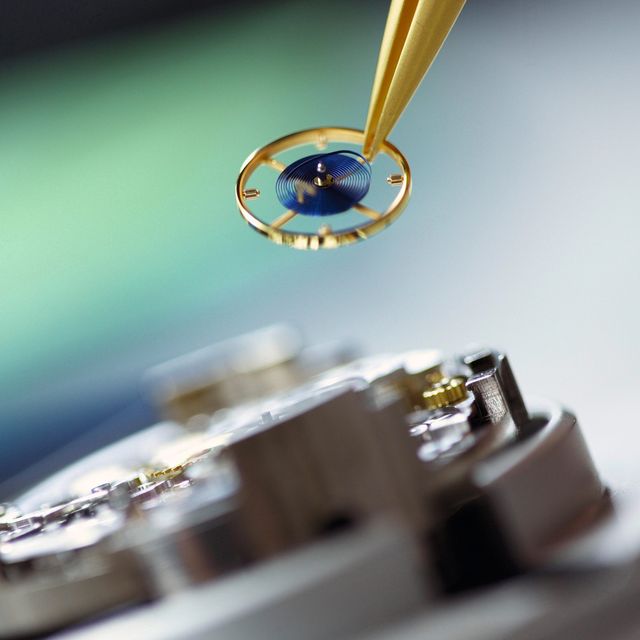Conventional wisdom states that you should service your mechanical watches every 3-5 years or so in order to keep them in tip-top shape. (Disclaimer: I have never once serviced the Rolex that's currently on my wrist in the 18 years I have owned it. I am a bad watch owner.) But what if you're between "service intervals" — how do you know if your precious timepiece needs a trip to the horological spa?
Certain signs are obvious, while others are less so (if your watch's dial is now filled with water whereas it was once filled with air, you should probably get that shit checked out). Here are a few tell-tale signs that it's time to take a time out and get back to proper timekeeping. (And other time jokes.)
There's vapor or water droplets beneath the crystal.
We know what you did — you went in the ocean and forgot to screw your crown down! Or maybe not — maybe you simply wore a vintage watch with a push-pull crown outside on a humid day. It doesn't matter how water got in there — if it did, you need to have the watch serviced. A gasket is probably broken, in which case you may have damaged both the movement the dial.
The watch is gaining time.
This is a sign that your watch may be magnetized: when this happens, the coils of the balance spring may actually stick together, effectively shortening the length of the spring and causing its timekeeping to speed up. You can try reversing this yourself with a demagnetizer, but if you want to be sure the issue will be properly resolved, take your watch to a watchmaker. (If your watch is battery-powered and gaining time, there's something real funky going on.)
The watch is losing time.
So many things could be wrong here, but one thing you can try, if it's an automatic watch, is manually winding it (should the watch feature manual winding.) If it's a handwoud watch and it's wound to the max (and still losing time), then you should let a professional examine it. If it's a quartz watch and the hand is stuttering or jumping in 2 or 3-second intervals, this is what's called an "end-of-life" indicator, and your watch needs a new battery.
There's a rattle coming from the watch case.
This is bad news bears. If a piece of the movement broke off (or a screw is loose, in the literal sense), it can make its way into the movement and truly mess up your day. Take the watch off, try not to shake it around, and get it to your watchmaker, STAT. (If you know how to remove a case back, you could try opening it and removing whatever's loose, but it's much better to let a pro handle this in a clean environment.)
Certain functions no longer work correctly.
If your watch features complications (anything beyond normal timekeeping, such as a chronograph or calendar) and these aren't working correctly, it could be a sign that something's amiss. First, consult the manual for your watch to make sure you're setting it correctly and, if the problem persists, take it to a watchmaker. And be prepared for quite a bill.



















